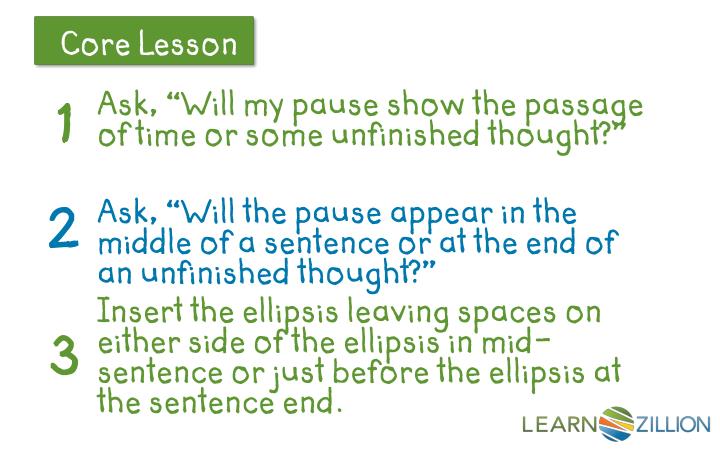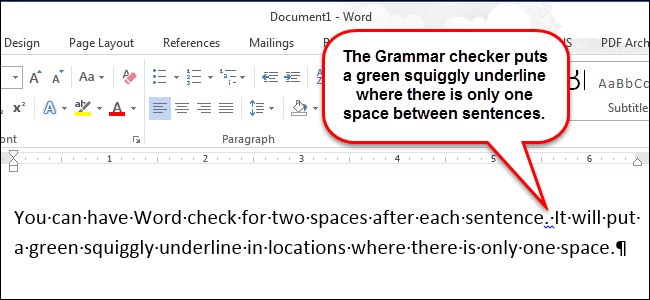The parts of the sentence are a set of terms for describing how people construct sentences from smaller pieces. Like the parts of speech, however, the parts of the sentence form part of the basic vocabulary of grammar, and it is important that you take some time to learn and understand them. Phrases and clauses are the building blocks of sentences. Phrases are groups of words that act as a part of speech but cannot stand alone as a sentence. The words in a phrase act together so that the phrase itself functions as a single part of speech. For example, phrases can function as nouns, verbs, adjectives, or adverbs.
If you understand how different types of phrases function, you can avoid misplacing them or leaving them dangling in sentences. Was/were forms can have different forms in the sentences. Therefore, it might take time to learn the correct forms. If you want to remember easily, you can think of was/were as the past tense form of the auxiliary verbs am, is and are.
Generally, "was is used for singular objects and "were" is used for plural objects. So, you will use "was" with I, he, she and it while you will use "were" with you, we and they. Even though you are singular, you must use "were". After Chinese, English is the most spoken language around the world.
The most important property of the English language that has been spoken by four hundred twenty-seven million people is its widespread use. When you know the English language, you can communicate anywhere around the world and you will even feel like you are home. Therefore, learning English has become a necessity when you travel around the world, in your business trips or in your social life. Unfortunately, solely vocabulary is insufficient if you want to speak and write the English language correctly.
How Do You Use Where In this article, you can find information and examples about using was/were, which are the past tense forms. The subject of a sentence is the person, place, or thing that is performing the action of the sentence. The subject represents what or whom the sentence is about. The simple subject usually contains a noun or pronoun and can include modifying words, phrases, or clauses. A comma marks a slight break between different parts of a sentence. Used properly, commas make the meaning of sentences clear by grouping and separating words, phrases, and clauses.
Many people are uncertain about the use of commas, though, and often sprinkle them throughout their writing without knowing the basic rules. A synonym is simply a word that means the same as the given word. It comes from the Greek "syn" and "onym," which mean "together" and "name," respectively.
When speaking or writing, one of the best ways to expand your vocabulary and to avoid using the same words repeatedly is to use a thesaurus to find synonyms . A thesaurus is a general phrase that describes a type of dictionary that provides a list of words that have the same or similar meaning as the word referenced. For example, if you were to look up the word "beautiful," you might get a listing of more than thirty words that have similar meanings. To mark "bonus phrases." Phrases that add information or clarify but are not necessary to the meaning of a sentence are ordinarily set off with commas. But when the phrase itself already contains one or more commas, dashes can help readers understand the sentence. Prepositions are the words that join a noun, pronoun or the noun phrases and make each sentence complete.
However, learning preposition is little tricky and hence, students should be conscious while reading a book or other documents and check the usage of the preposition. In these sentences, that and which are introducing what's known as a restrictive relative clause. This is a clause containing essential information about the noun that comes before it.
If you leave out this type of clause, the meaning of the sentence is affected – indeed, it will probably not make much sense at all. Restrictive relative clauses can be introduced by that, which, whose, who, or whom. A compound sentence with "where" contains at least two independent clauses.
These two independent clauses can be combined with a comma and a coordinating conjunction or with a semicolon. "Although" is a conjunction that is often used to show a contrast, but sometimes it can be difficult to know when to use it in a sentence. Use a semicolon between independent clauses joined by a coordinating conjunction if the clauses are already punctuated with commas or if the clauses are lengthy. Use a semicolon between two independent clauses that are connected by conjunctive adverbs or transitional phrases.
Parentheses also signify a break in thought, but they mark an addition of information rather than an interruption like dashes do. Rather than a surprise , parentheses are a gentler insertion in your sentence. Also like dashes, parentheses should be used sparingly.
Too many can break the clarity and flow of your ideas. Another thing to keep in mind is that they are often seen as casual in tone, so make sure they are appropriate for the style of writing you are using. If not, punctuation marks such as commas are often more academically appropriate. In the two sentences about the store, the words "which" and "where" both function as relative pronouns. Relative pronouns, such as "who" and "that," introduce dependent clauses.
A sentence expresses a complete thought and contains a subject and a predicate . The four basic types of sentences—simple, compound, complex, and compound‐complex—use phrases and clauses in varying degrees of complexity. An em dash—inserted by typing Control+Alt+Minus between the words it separates—signals an abrupt break in thought. It can be seen as "surprising" the reader with information. If used judiciously it can mark a longer, more dramatic pause and provide more emphasis than a comma can. If overused, it creates an impression of haste and carelessness and can diminish cohesion in your paragraphs.
Think carefully before peppering your papers with them. In your examples you are using "that" as a demonstrative adjective and "which" as in interrogative. These are other parts of speech that "that" and "which" can be used as. Most of this discussion is related to using "that" and "which" as relative pronouns to introduce relative clauses. A compound-complex sentence with "where" contains at least two independent clauses and at least one dependent clause. A complex sentence with "where" contains at least one independent clause and at least one dependent clause.
Dependent clauses can refer to the subject the sequence/time , or the causal elements of the independent clause. A simple sentence with "where" contains a subject and a verb, and it may also have an object and modifiers. The sentence is sometimes presented as a puzzle, where the solver must add the punctuation. Em dashes save the day when other punctuation would be awkward. For instance, em dashes can replace parentheses at the end of a sentence or when multiple commas appear in a parenthetical phrase.
To properly learn the differences between "to" and "for," you need to practice. These are two words that cause a lot of confusion, even fornative-English speakers. So, it's well worth taking a few minutes to know the difference between the two. Below, we've provided an easy guide on understanding the grammatical rules. We've also given some examples on how to use who and whom correctly.
If you want to avoid mistakes in using who vs whom, read on. The conjunctive adverb however signals a connection between two independent clauses, and commas should not be used to connect independent clauses if there is no coordinating conjunction. Both parts of the sentence are independent clauses, and commas should not be used to connect independent clauses if there is no coordinating conjunction. A semicolon is most commonly used to link two independent clauses that are closely related in thought. When a semicolon is used to join two or more ideas in a sentence, those ideas are then given equal position or rank. A simple test you can use to determine whether to use "which" or "that" is to check the meaning of the sentence when you take out the clause in question.
If the clause points to information that is essential to the meaning of the sentence, then you would use "that". If the clause is used to enhance without taking anything away from the meaning of the sentence, then use "which". I agree that "which" can be used in both restrictive and non-restrictive relative clauses, but "that" is only used in restrictive ones. In modern American English, I think "that" is much more commonly used, "which" is more formal and more likely used in writing. Also, "which" can refer to a whole idea in non-restrictive relative clauses, as in "He robbed a bank, which resulted in him serving five years in prison." The sentence can be given as a grammatical puzzle or an item on a test, for which one must find the proper punctuation to give it meaning.
The intention was for the reader to add the needed punctuation for the sentence to make grammatical sense. In the United States, one sometimes has a literary or highfalutin feel to it; the more it is used, the more pretentious it feels. In British English, the use of the impersonal or generic one is more commonplace and has no such stigma.
One of the most critical points is to remember this information. Based on your needs and conditions, you might opt for different repetition methods. If you want, you can repeat with English movies or songs, chatting with native English speakers, reading a book or by travelling. Also, you can follow the classical methods like solving a test, lectures and sentences examples. The indirect object indicates to whom or for whom the action of the sentence is being done. The predicate expresses action or being within the sentence.
The simple predicate contains the verb and can also contain modifying words, phrases, or clauses. The most common types of dashes are the en dash (–) and the em dash (—). A good way to remember the difference between these two dashes is to visualize the en dash as the length of the letter N and the em dash as the length of the letter M. These dashes not only differ in length; they also serve different functions within a sentence. A compound-complex sentence contains at least two independent clauses and at least one dependent clause.
A complex sentence contains at least one independent clause and at least one dependent clause. A simple sentence contains a subject and a verb, and it may also have an object and modifiers. "Of which" is a prepositional phrase, meaning it is made up of a preposition, "of," and one other word. In this case, that other word is "which," a pronoun used to provide more detail about a person, place, thing or idea referred to elsewhere in the sentence. Had had is the past perfect form of have when it is used as a main verb to describe our experiences and actions.
We use the past perfect when we are talking about the past and want to refer back to an earlier past time, Madiini. In these examples, note the use of before, after, already and by the time as a trigger for the past perfect. Note also that the contracted form of had had is 'd had. There are some sentence structures, for example, the passive voice, that work slightly differently. Once you are comfortable with declarative sentences, take some time to explore other sentence structures as they will give you language more variety and are a fun challenge to learn. Most people will go their whole lives and never have the need to use i.e.; this is because the simple English words will do the trick.
Textbooks, contracts, and other formal documents may employ this Latin abbreviation to save space. Even if you never choose to use i.e. in your own writing, it is likely that you will run across this abbreviation while reading or conducting research. One of the most common ways to make your point more clearly is to give additional information. You could explain it differently or give some examples.
This is fairly easy to do when you are in a conversation with someone, but it gets complicated when you are writing. You cannot always tell when readers will not understand your writing. Some people may remember learning the mnemonic FANBOYS when studying the coordinating conjunctions for, and, nor, but, or, yet, so. And some instructors also still use this as means of explaining which words should not be given the chance to lead the parade.
But it's slightly ridiculous to insist that these words should never be used to begin a sentence, when a thousand years of English writing has shown this to be a fine way to start off. Clauses are groups of words that have a subject and a predicate. Independent clauses express a complete thought and can stand alone as a sentence. Subordinate clauses can act as parts of speech but depend on the rest of the sentence to express a complete thought. In each of the five "had had" word pairs in the above sentence, the first of the pair is in the past perfect form. The italicized instances denote emphasis of intonation, focusing on the differences in the students' answers, then finally identifying the correct one.
In this situation, the subject of the subordinate clause — usually a who or a that — will refer to the plural noun in the preceding prepositional phrase and require a plural verb to follow. As commas represent a pause, it is good practice to read your writing out loud and listen to where you make natural pauses as you read it. More often than not, you will indicate where a comma should be placed by a natural pause.
Although, the 'rules' of where a comma needs to be placed should also be followed. Every sentence should include at least a capital letter at the start, and a full stop, exclamation mark or question mark at the end. This basic system indicates that the sentence is complete. You need to use was/were for the examples and situation about. You need to check the object to decide which auxiliary verb you are going to use in the sentence.
Also, it is important to know positive, negative and question forms of these patterns. The direct object receives the action of the sentence. Every word in a sentence serves a specific purpose within the structure of that particular sentence. According to rules of grammar, sentence structure can sometimes be quite complicated. For the sake of simplicity, however, the basic parts of a sentence are discussed here.
The simplest definition of a noun is a thing and nouns are the basic building blocks of sentences. These things can represent a person, animal, place, idea, emotion – almost any thing that you can think of. Dog, Sam, love, phone, Chicago, courage and spaceship are all nouns. The more nouns you know in a language, the better you will be able to communicate your ideas. Here, we'll take a closer look at what makes a noun a noun, and we'll provide some examples of how nouns are used. If the commas were removed, these sentences wouldn't be as clear but the meaning would still be the same.

























No comments:
Post a Comment
Note: Only a member of this blog may post a comment.